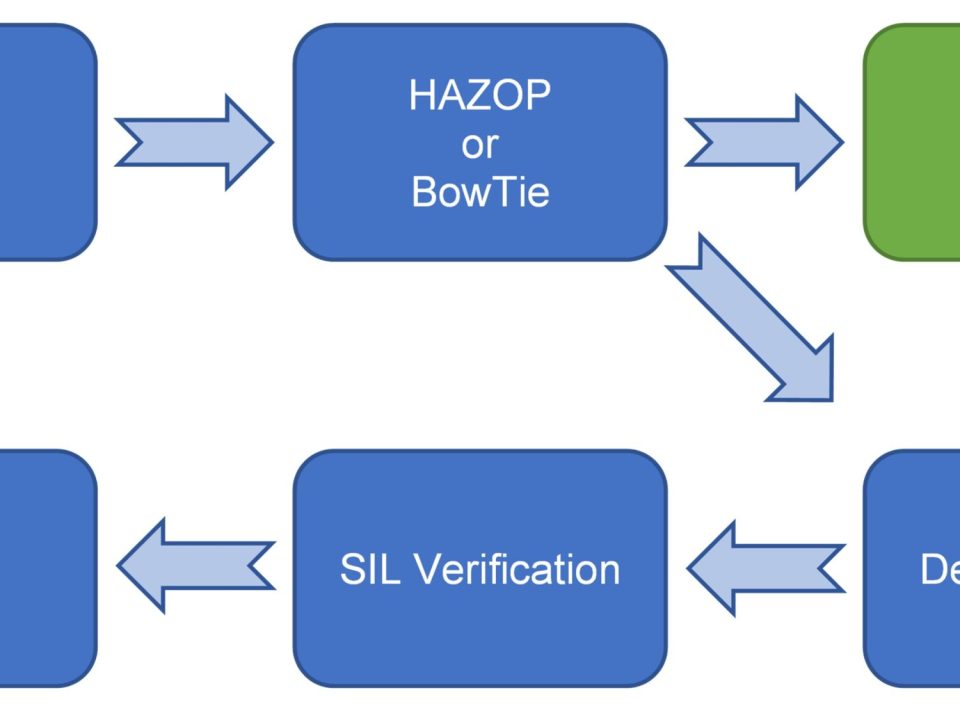Hazardous Chemical Safety Training on Chemical & Hazard Identification Risk Assessment

Exothermic Reaction Hazards
November 7, 2024
Importance of HAZOP Training in Industrial Safety & How to Implement a Successful HAZOP Program
November 7, 2024In today’s industrial landscape, hazardous chemical safety training is paramount to ensuring the well-being of employees and the environment. With the increasing complexity of processes involving hazardous chemicals, organizations must prioritize effective training programs that encompass hazard identification and risk assessment. This comprehensive approach not only safeguards employees but also fosters a culture of safety within the workplace.
Understanding Hazardous Chemicals
Hazardous chemicals are substances that can pose a significant risk to health and safety when mishandled. They can be classified into various categories, including flammable materials, toxic substances, corrosive agents, and reactive chemicals. Recognizing the dangers associated with these substances is the first step in developing a robust safety management system.
Importance of Hazard Identification
Effective hazard identification is essential for preventing accidents and mitigating risks associated with hazardous chemicals. This process involves recognizing potential hazards in the workplace, assessing their impact, and implementing measures to control or eliminate them. The identification process should be systematic and comprehensive, involving the following steps:
- Inventory of Chemicals: Maintain an up-to-date inventory of all chemicals used in the workplace, including their Safety Data Sheets (SDS). This helps ensure that all hazards are recognized and communicated effectively.
- Review of Processes: Assess the processes involving hazardous chemicals, identifying points where exposure or accidents could occur.
- Employee Input: Engage employees in hazard identification efforts, as they often have valuable insights into the risks associated with their daily tasks.
Conducting a Risk Assessment
Once hazards are identified, conducting a thorough risk assessment is crucial. This process involves evaluating the likelihood of an incident occurring and the potential severity of its consequences. Here’s how organizations can effectively conduct a risk assessment:
Step 1: Analyze the Hazard
Understanding the nature of the hazard is key. This includes evaluating the chemical’s properties, potential health effects, and the conditions under which it poses a risk. For instance, flammable liquids may present different hazards depending on their flashpoints and storage conditions.
Step 2: Determine Exposure Levels
Evaluate how employees may be exposed to hazardous chemicals, whether through inhalation, skin contact, or ingestion. Identifying exposure routes helps prioritize control measures and safeguards.
Step 3: Evaluate Existing Controls
Assess the effectiveness of current safety measures and protocols. Are there adequate ventilation systems in place? Are personal protective equipment (PPE) requirements being met? This evaluation provides insight into potential areas for improvement.
Step 4: Risk Evaluation
Combine the likelihood of an incident occurring with the potential impact to categorize risks as low, moderate, or high. This evaluation helps organizations focus their resources on mitigating the most critical risks.
Implementing Safety Measures
Following the risk assessment, organizations must implement appropriate safety measures to mitigate identified risks. These measures may include:
- Engineering Controls: Implement modifications to equipment or processes to reduce exposure to hazardous chemicals. For example, installing fume hoods can minimize inhalation risks.
- Administrative Controls: Develop and enforce safety policies and procedures that outline safe handling practices and emergency response plans.
- Personal Protective Equipment (PPE): Provide appropriate PPE, such as gloves, goggles, and respirators, to protect employees from exposure to hazardous chemicals.
Training and Education
Training is a critical component of hazardous chemical safety. Organizations should provide comprehensive training programs that cover:
- Hazard Communication: Ensure employees understand the risks associated with the chemicals they work with and know how to read and interpret SDS.
- Safe Handling Practices: Educate employees on safe handling, storage, and disposal methods for hazardous chemicals.
- Emergency Response: Train employees on emergency procedures in the event of a chemical spill or exposure, including first aid measures and evacuation protocols.
The Role of Safety Consultants
Engaging a Safety Consultant can significantly enhance an organization’s hazardous chemical safety training program. Safety consultants bring expertise and experience to help businesses develop and implement effective safety strategies tailored to their specific needs. They can conduct audits, such as a Safety Audit or a Fire Audit, to identify potential gaps in safety practices and provide actionable recommendations.
The Importance of Process Safety Management
A robust Process Safety Management (PSM) system is essential for organizations that handle highly hazardous chemicals. PSM involves a structured approach to managing the integrity of operating systems and processes, emphasizing the importance of safety at all levels of the organization.
The Benefits of Hazardous Chemical Safety Training
Implementing a comprehensive hazardous chemical safety training program has numerous benefits:
- Reduced Incidents: Effective training significantly decreases the likelihood of accidents, injuries, and illnesses associated with hazardous chemicals.
- Enhanced Compliance: Training ensures organizations meet legal and regulatory requirements related to hazardous chemicals, reducing the risk of penalties.
- Improved Employee Morale: A commitment to safety fosters a positive workplace culture, enhancing employee morale and productivity.
- Cost Savings: By preventing accidents and reducing downtime, organizations can save on potential costs associated with injuries, legal fees, and regulatory fines.
Conclusion
In conclusion, hazardous chemical safety training focused on chemical and hazard identification risk assessment is crucial for any organization working with dangerous substances. By implementing effective training programs, conducting thorough risk assessments, and engaging safety consultants, businesses can create a safer working environment.
For organizations looking to enhance their safety protocols, conducting a Hazop Study is another valuable tool. This systematic approach to identifying potential hazards and operational deviations helps organizations improve their safety management systems further.
Prioritizing safety not only protects employees but also enhances operational efficiency and ensures compliance with regulations, making it an essential investment for any business.




